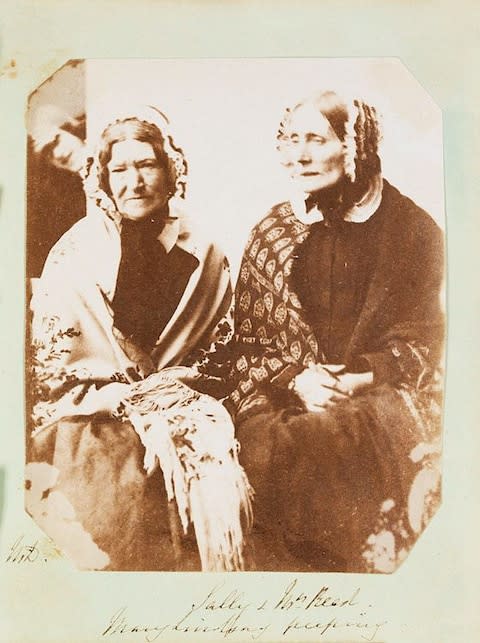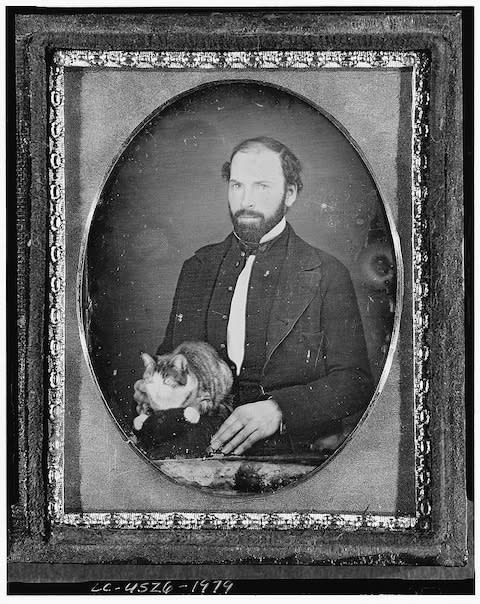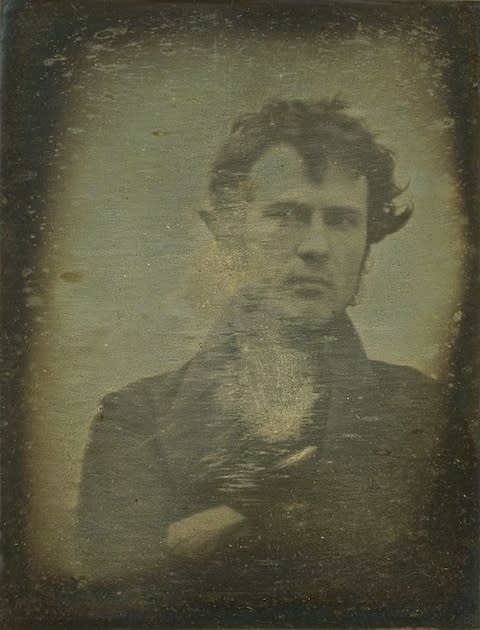The Victorian photobomber - and other photography firsts

Photobombing, or invading the background of a photograph without the subject's knowledge, was first typed into Google search in 2008. Thanks to several eminent practitioners of the art since (Jennifer Lawrence and the Queen, to name but two), the term became Collins' Dictionary's Word of the Year in 2014.
It seems, though, that this now hugely popular stunt has been around far longer than originally thought. A portrait taken in 1853 by the Welsh photographer Mary Dillwyn, of two elderly ladies dressed in bonnets and shawls, includes a japester named Mary, "peeping" as Dillwyn wrote on her print, in the background.

The image is one of around a dozen selected by the Royal Photographic Society and insurers Trōv, to highlight this weekend's Photography Show at the NEC in Birmingham, where artists such as Mary McCartney and Miles Aldridge will be interviewed on stage.
Alongside the first photobomb, RPS researchers have unearthed other historical versions of supposedly modern photo cliches, including the first selfie, the first cat photo and the first #foodporn.
Captioned "Unidentified man with cat, three-quarter length portrait, full face, seated" by the Library of Congress, this picture, taken sometime in the mid-19th century, is believed to be the first photograph of a cat. Two centuries later, there are, according to a 2015 report, around 6.5 billion other feline snaps online.

It seems even the top-hat-and-tails-wearing Victorians liked to capture evenings in the pub for posterity. Here's Scottish photographer Robert Adamson enjoying a drink in Edinburgh in 1844, with his friends James Ballantine (left), a writer and stained-glass artist and Dr George Bell (centre), a commissioner of the 1845 Poor Law.

Some 24 billion selfies were uploaded to the internet last year, but Robert Cornelius, from Philadelphia, had already mastered the art in 1839. The amateur chemist and photography enthusiast would have had to set up his camera and then sprint round in front to pose for his shot.

Even a cursory scroll on Instagram will furnish your lucky eyeballs with several photos taken from a plane window. But James Wallace Black did one better with his balloons-eye view of Boston, taken in 1860. Black later became famous for images of the city taken in aftermath of the Great Boston Fire of 1872.

TIME magazine named the selfie stick one of the greatest inventions of 2014, but, back in 1926, Arnold Hogg had already fashioned his own version, for a portrait of he and his wife, Helen, taken a year after the couple married in Rugby, Warwickshire.

Trōv are calling on the public to search their attics and photo albums, to trace other, even earlier examples of these kinds of images. Any finds should be submitted to media@trov.com

